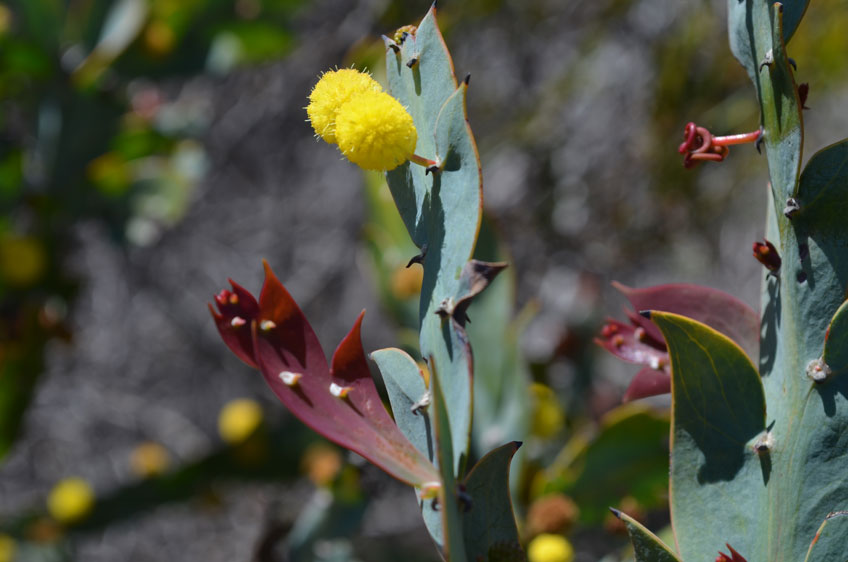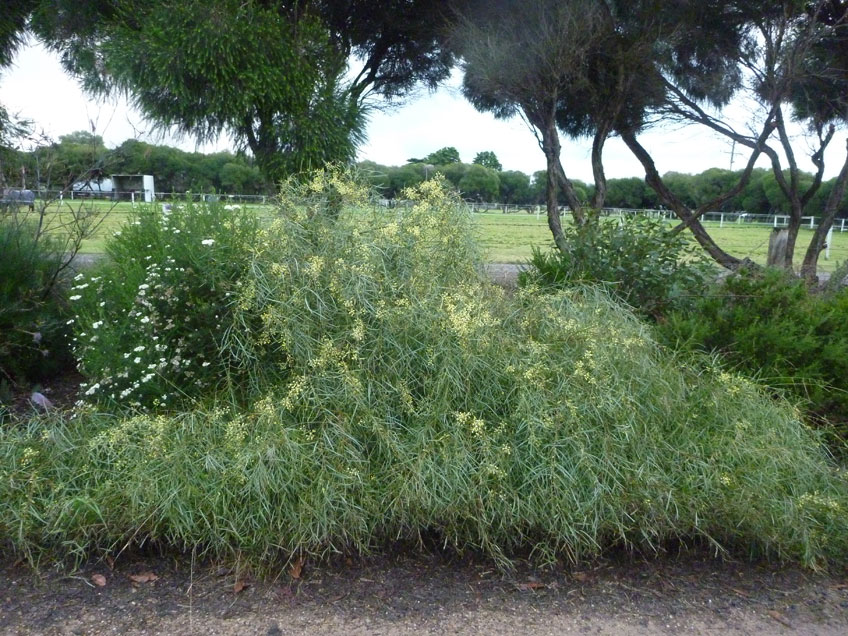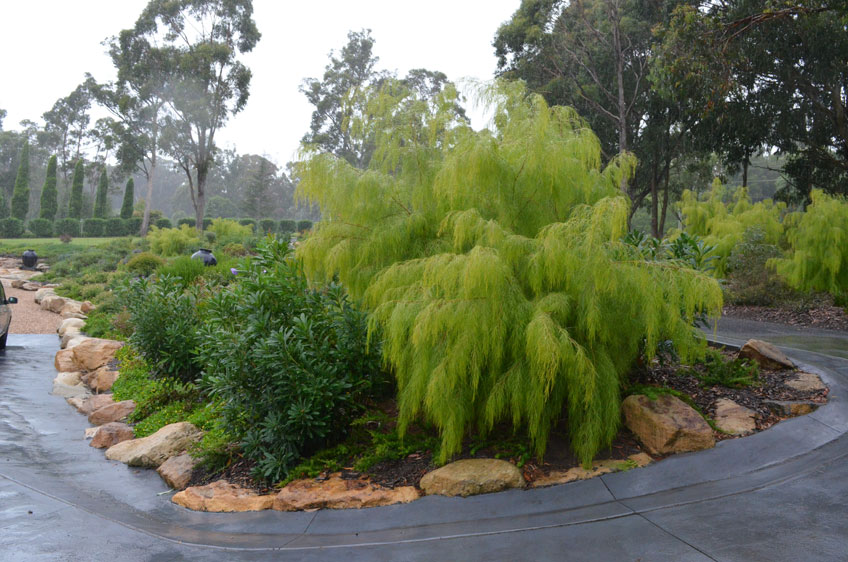Acacias are one of our most iconic Australian plants.
Here our resident native plant guru, Angus Stewart shows us how to get the most from these fast-living garden beauties.
Words and pictures: Angus Stewart

Sand wattle, Acacia glaucoptera, draws attention with balls of flower exploding from the middle of the foliage.
Acacias are synonymous with Australia, giving us our national floral emblem, Acacia pycnantha, with its familiar bold green and gold colours.
Understanding how wattles fit into the Australian bush will help you get the best out of them in the garden. Wattles are legumes that are able to convert
nitrogen from the atmosphere into fertiliser. Most species act as 'pioneer' plants that come up profusely after a bushfire and grow very rapidly to
fill the environmental vacuum left behind. Consequently, wattles tend to 'live fast and die young', with a useful life span of around ten years, although
there are exceptions to that rule such as the long-lived black wattle (Acacia melanoxylon), the cedar wattle (A. elata) and the
magnificent Gosford wattle (A. prominens).
Growing
In the garden, wattles are perfect as fast growing 'nurse' plants to create shelter and protection for slower growing trees and shrubs. Acacias create
great habitat for native birds, with the often-dense foliage providing shelter for smaller birds that also feed on the seedpods.
Wattles generally prefer a spot with full sun, but they can certainly do well in filtered light, such as in the shade of eucalypts or deciduous trees.
Given the fact that they are able to supply their own needs for nitrogen, they tend to grow on the sniff of an empty fertiliser bag. Having said that,
a small handful of native plant food such as Bush Tucker (made by Neutrog) dug into the soil in your planting hole will help them establish even faster,
particularly if they are being used for quick effect in a new garden. Tip prune wattles when they are newly planted to encourage a nice bushy framework
and trim them back once a year by pruning them just behind the spent flowers.

Cootamundra wattle, Acacia baileyana, offers silver or purple foliage and brilliant yellow flowers.
Caring
A telltale sign that your wattle may be nearing the end of its life is damage by stem borers. Frass (a sawdust-like residue left behind by borers) on the
trunk and branches is the thing to look for and if you catch it early you can squash the borer larvae with a bit of thin gauge wire and prolong the
life of your plant. The presence of sap weeping out of the trunk is another tell-tale sign of borer damage, and is a sign that the plant is defending
itself by trying to drown the borer larvae in their holes. Apart from borers, wattles sometimes develop large swellings on the foliage or stems that
can look like seedpods, but are in fact galls caused by tiny native wasps. These can be easily dealt with by cutting them off and putting them in the
bin.
Warning!
An important point if you live near a natural bushland area is that many species will potentially produce lots of seed, and can sometimes seed themselves
into nearby areas. You can prevent this by pruning them straight after flowering to remove any developing seedpods. Growing more compact species and
varieties will help make this job much easier.
Caring
There are some wonderful old favourites that are ready-made garden plants, including the ever-popular Cootamundra wattle (A. baileyana) and the
Flinders Range wattle (A. iteaphylla). These seem to adapt well to just about anywhere in Australia. If you are looking for a real wow factor,
the sand wattle (A. glaucoptera) is worth trying in a sun-drenched, well-drained spot. When it flowers straight from its interestingly textured
foliage it is a real eye-catcher.

Flinders Range Wattle, Acacia iteaphylla, is a shapely, decorative shrub that quickly gets to two or three metres.
As well as these species, there is an ever-increasing range of wattle varieties that provide some exciting options for gardeners. A range of prostrate
varieties can be used either as ground covers or to cascade over retaining walls or rockeries.
Compact wattle varieties are increasingly providing wonderful foliage textures as well as flowers, with the various varieties of the river wattle (A. cognata) leading
the way with the cascading, fine foliage being their most ornamental feature. A particular favourite of mine is a golden-leafed form called ‘Lime Magik’,
whose cascading habit makes a year-round feature for a well-drained, sunny spot in the garden. Acacia howittii ‘Honey Bun’ is another beautiful,
well-rounded shrub that grows less than two metres tall.

‘Lime magik’ is a form of the river wattle Acacia cognata, with fine weeping golden-lime foliage that makes a year-round feature.